BEST WHITETAIL FOOD PLOT MIX 2025
FOOD PLOTS
Owen Brick
7/6/202510 min read
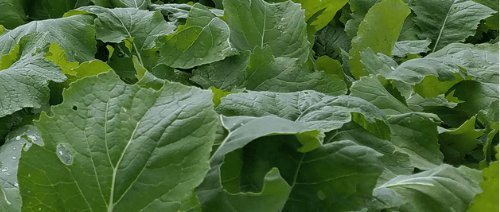

Planting food plots remains one of the most effective strategies whitetail deer hunters can use to improve their odds of success. A well-managed plot provides a consistent, high-quality food source that not only attracts deer, but keeps them on your property - establishing predictable movement patterns and laying the groundwork for daylight activity. But food plots offer more than just shot opportunities. When designed and implemented correctly, they actively build a better deer herd. Simply put, food plots don’t just improve your hunting ground - they dramatically increase your chances of filling a tag. Unfortunately, many hunters fall short year after year by planting poorly designed mixes, using inadequate planting methods, or an overall failure in the food plot program. This article will break down everything you need to know about the best whitetail food plot mix for 2025 and how to use it to take full control of your land and your hunt.
GREEN BASE
To build a successful whitetail food plot program, you must start with an annual green base. This is the foundation of attraction. Deer crave lush, easily digestible greens for their third feeding of the day, and mature bucks will travel long distances to find a reliable, quality food source.
Whitetails feed five times in a 24-hour period. The first two feedings happen in or near bedding areas, where deer browse on woody vegetation that’s difficult to digest. But feeding number three, which occurs during the final hour of daylight, is the most important feeding for habitat managers to control.
If you fail to control the third feeding, you lose - you are not the herd influencer.
This key feeding is when deer actively seek out moisture-rich, nutrient-dense greens to balance out their earlier, woody intake. Consider it this way: they have been consuming woody browse all morning, and they cannot wait to go wash it all down with high-quality greens. For more on deer feeding frequency and behavior, check out this article.
Now that we’ve established the importance of a green base, let’s break down the best planting structure for 2025. This approach is built around the proven ½ & ½ structure method - a layout that optimizes deer attraction and nutrition throughout the entire season.
Here’s how it works:
One half of your plot is planted with a diverse green blend, ideal for early and mid-season attraction.
The other half is planted with brassicas, which peak in nutritional value later in the fall and into winter.
This combination creates a natural progression that aligns perfectly with whitetail feeding behavior, keeping deer on your property consistently from opening day through the late season. For a full breakdown of the ½ & ½ method, check out this article.
2025 BEST WHITETAIL FOOD PLOT MIX
The best whitetail food plot mix for 2025 is built on strategy. It’s designed to be highly attractive, provide tremendous tonnage, adapt to different soil types, and succeed with a range of planting methods. Every seed in this blend has been selected through years of field trials and research conducted by hunters, for hunters.
With that being said, there’s no “magic mix” that works everywhere. If someone online insists you must plant “X or Y,” they’re probably trying to sell you something. Your food plot program should always be tailored to your specific region, soil type, planting method, budget, and goals. That is part of what makes this 2025 blend stand out: it’s customizable, proven, and practical.
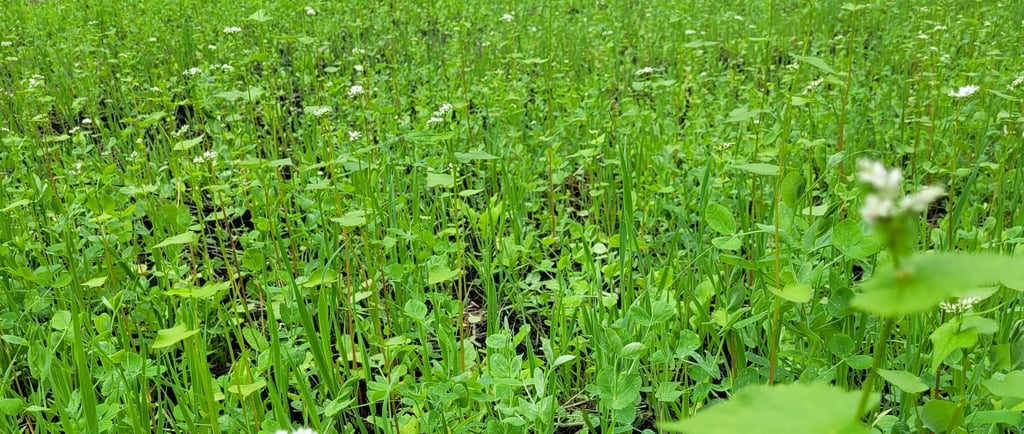

GREEN BLEND
A blend of highly attractive plants will be used for one half of the plot. The green blend side features “candy crops”- highly attractive, palatable forages that draw deer in from the early season through mid-fall. Here is EXACTLY what to add to the mix so you can make the mix yourself! Note that the seeding lbs/acre is a general guide, planting methods, soil types, etc., will all affect the amount of seed necessary.
Peas
An Austrian winter pea or tundra pea is best for producing the most volume with the highest frost tolerance. Highly attractive for the early to mid-season, peas are a great candy crop that deer love. Peas should be planted roughly 60+lbs/acre in a mix, 200lbs+/acre alone.
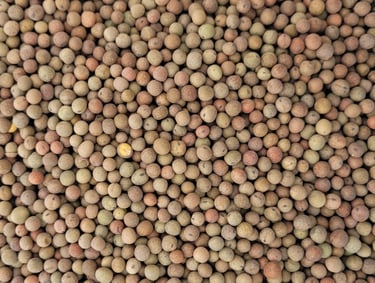

Tillage Radish
Tillage radish is technically a part of the brassica family, but they are a great addition to this green blend and pairs especially well with peas. This radish provides luscious leaves for browse along with the actual radish for later in the season. Not to mention, tillage radish is great for the soil. It gets its name tillage radish because it pushes up the soil, creating a small nitrogen pocket underneath the surface. Tillage radish should be planted less than 4lbs/acre in a mix, 8lbs/acre if planted alone.

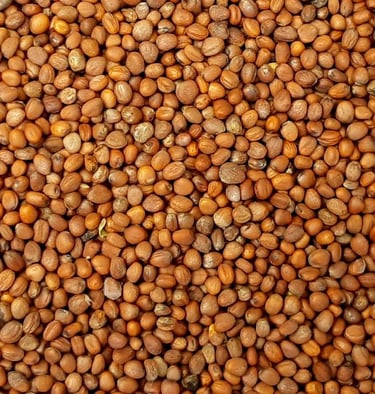
Winter Oats
When planting oats, cold-hardy varieties like Tundra oats are ideal for northern regions. These are better suited to withstand harsh climates. However, if you're on a budget, more affordable options like Warrior or Pearl oats from your local seed supplier can still perform well. Young oats are particularly attractive to deer, making them a valuable component of this green blend. When planting, use no more than 25 lbs/acre in a mix, or up to 100 lbs/acre for a standalone oat plot.
Important: Avoid over-seeding oats in a mix. Adding too many pounds per acre can cause the oats to dominate, choking out the other other plants and preventing the mix from reaching its full nutritional and volume potential.
Depending on your soil type, you may want to consider substituting wheat in place of oats. Wheat tends to perform poorly in more acidic soils, whereas oats are more tolerant of a wider range of soil pH levels. A key difference between the two is palatability: deer generally prefer oats, making them a slightly more attractive forage option. However, it's important to plant only one of the two, not both together, as they compete for resources, which can stunt growth in both crops. Wheat should be planted roughly 30lbs/acre in a mix, 110lbs/acre alone.
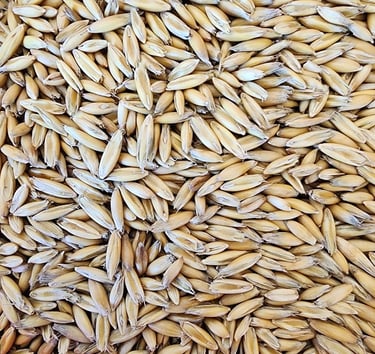

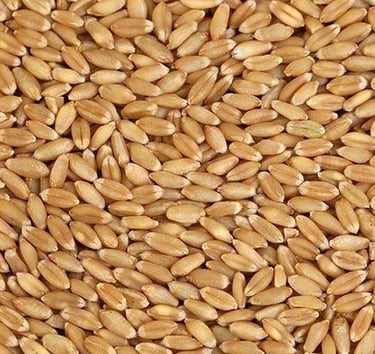

Buckwheat
Deer love young buckwheat, making it a great candy crop in the early season. Buckwheat makes a great addition to a green blend, but there is no reason to plant in a stand alone plot. Minimal seed is needed, 10lbs/acre or less.
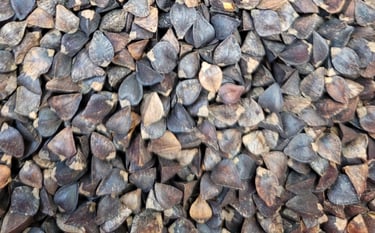

Deer Vetch
Another candy crop, deer vetch, joint vetch, or trefoil, is another great addition to sweeten a mix. Deer vetch does not produce large amounts of volume, but deer love to eat it, thus making it a great choice for a sweetener to a mix to add some diversity. 5#/acre or less is plenty for a mix. Deer vetch is quite expensive, so adding it to a mix is not essential, but if it is in your budget, it can be quite beneficial.
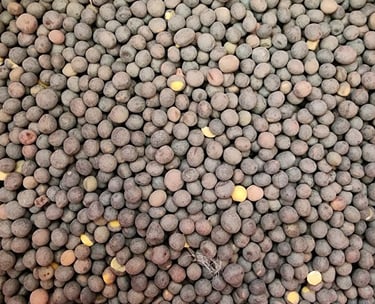

RYE TOP DRESS
Approximately four to five weeks after your initial green blend planting, top dress that half with 50-200lbs of winter rye (rye grain) to extend its attractiveness and nutritional value well into the season.
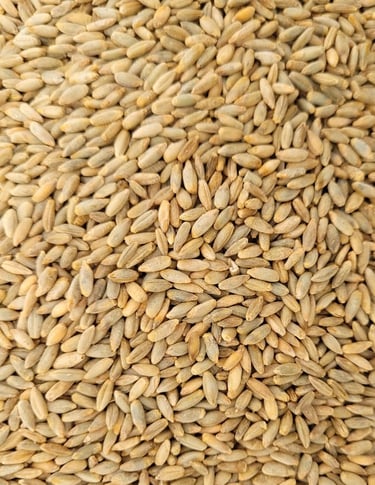

Top dressing your plots with rye provides a couple of benefits. It fills the holes in your plots, small patches of dirt will be replaced with lucious green mass. More importantly, rye growth will extend the attractiveness of the green blend into the late season. When the other plants in the green blend are browsed down, the rye will be there to take you through the season. Not to mention, rye is very browse tolerant. If your green blend is down to the dirt by the first week of September, you can always add more rye to take you through the season.
Rye is the number one food plot fail safe. If your food plots fail for whatever reason, simply throw down 200+lbs per acre of rye and go into the season with something valuable. Rye is easy to plant and grow. As long as you have good seed to soil contact, adequate sunlight, and a little bit of moisture, it will grow.
Another benefit of planting winter rye is that it is the first thing to green up in the spring, providing much-needed nutrition during a time of recovery after the winter stress period.

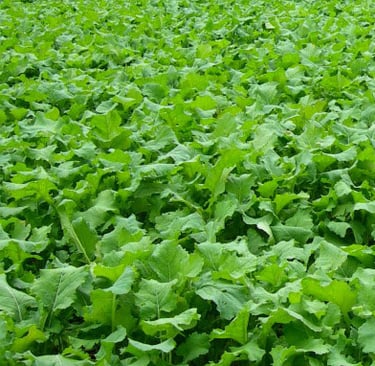
BRASSICA
The other half of your food plot should be planted in brassicas - a cold-hardy powerhouse blend typically consisting of radish, rape, and turnips. As your green blend begins to fade later in the season, deer will naturally shift to the brassica side, which peaks in palatability and nutrition just as cold weather stress begins to set in. This timed transition provides reliable, season-long utility with minimal input, keeping deer on your property and feeding when they need it most.
Unmatched Volume + Winter Prep
Brassicas produce immense forage tonnage, between 5–6 tons per acre in just ten weeks under ideal conditions. Even under average conditions, plots can yield 2–3 tons per acre, providing significant nutritional value and winter preparation for your herd. This high volume is what allows you to grow and shape a deer herd and helps them survive the hardest months of the year.
FALSE CLAIMS
Unfortunately, some misinformed people will claim that brassica “doesn’t work.” If this is the case, it is likely caused by other circumstances. Namely, failing to effectively pair it with a quality complementary food source - the GREEN blend half! When implemented alone or blended with other seed types, brassica performance drops significantly. But when paired correctly with a high-quality green base, brassicas excel.
Maximize Growth with Urea
For optimal brassica performance, apply 75+ lbs of urea per acre about 4–5 weeks after planting, around the same time you're top-dressing your green blend with winter rye. Apply the urea with an approaching rain but NOT when leaves are wet - doing so will burn the leaves and diminish growth. Also don’t apply during heat without rain in the forecast, urea can volatilize and become unavailable to the plants. Brassicas are nitrogen hogs. A well-timed urea application can make a major difference in both leaf mass and root bulb development.
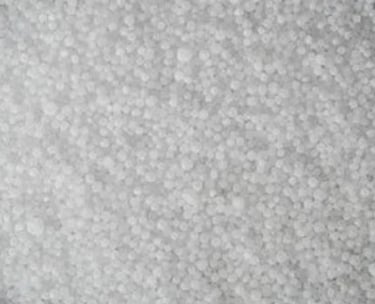

Seed Selection
Planting the proper brassica blend is important. The right mix should include 5-6 varieties to create diversity in flavor, growth timing, and stress tolerance. A strong brassica mix might include: tillage radish, purple top turnips, varieties of rape, bulls eye turnips, daikon radish.
Never combine cereal grains with brassica (oats, rye, wheat). These compete directly with brassicas for nitrogen and will stunt overall growth. Mixing cereals and brassicas is one of the biggest mistakes in commercial blends.
It is critical to avoid Dwarf Essex Rape in your brassica blend. This extremely cheap seed is used by food plot seed companies to cheapen the mix. It offers very little volume, and as the name suggests - “dwarf” - it won’t provide the tonnage needed for meaningful late-season feeding.
PLANTING GUIDES
Both blends in the 2025 Best Food Plot Mix are easy to plant, but following these quick and simple guides will help ensure optimal performance in your plots.
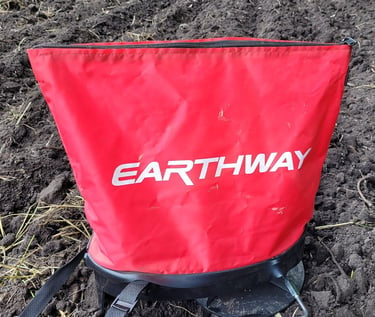

GREEN BLEND
Ensure weed concerns have been properly addressed using herbicide, tillage, or both. The greatest cause of failure for a high-quality food plot is a lack of adequate weed control. Also, ensure that the soil pH and fertility levels are addressed before planting.
Make sure that there is adequate sunlight reaching the plot. A minimum of 6 hours per day is best. There is no good food plot blend that will tolerate shade and produce an adequate plot.
Broadcast the peas and other greens separately to ensure even proportional distribution. Combining both will result in the smaller seeds being spread before the larger peas.
Ensure proper seed-to-soil contact by lightly dragging, cultipacking, or driving over the soil with an ATV or vehicle to pack the seed into the top layer of the soil. Seed should be covered no more than ½ inch.
Greatly extend the use of the plot by broadcasting 50-100-150lbs+ of winter rye or wheat into the plot 4 weeks after planting.
Before planting, ensure an appreciable rain is forested in the near future for optimal results.
Planting Date: Late July to early August in northern areas and late August to early September in southern areas.
BRASSICA
Ensure weed concerns have been properly addressed using herbicide, tillage, or both. The greatest cause of failure for a high-quality food plot is a lack of adequate weed control. Also, ensure that the soil pH and fertility levels are addressed before planting.
Make sure that there is adequate sunlight reaching the plot. A minimum of 6 hours per day is best. There is no good food plot blend that will tolerate shade and produce an adequate plot.
Ensure proper seed-to-soil contact by lightly dragging, cultipacking, or driving over the soil with an ATV or vehicle to pack the seed into the top layer of the soil. Seed should be covered no more than ¼ inch.
Optional – To greatly improve the success of your brassica plot, broadcast 75lbs of 46-0-0 four weeks after planting when the young brassica is completely dry and rain is in the immediate forecast.
Before planting, ensure an appreciable rain is forested in the near future for optimal results.
Planting Date: Late July to early August in northern areas and late August to early September in southern areas.
Conclusion
There’s no question, highly attractive food plots that provide significant volume throughout the season are a game-changer for private land whitetail hunting. Planting the right blends, in the right layout, and at the right time is critical for success. By using a combination of an annual green blend and brassicas, you create a proven structure that delivers season-long attraction, nutritional value, and predictable deer movement. When this strategy is implemented in conjunction with a quality habitat and hunting plan, results are inevitable. Follow the blueprint outlined in this article to increase your whitetail hunting success for this fall and for years to come!
Copyright© 2025 WHITETAIL SYSTEMS AND SERVICES, LLC
